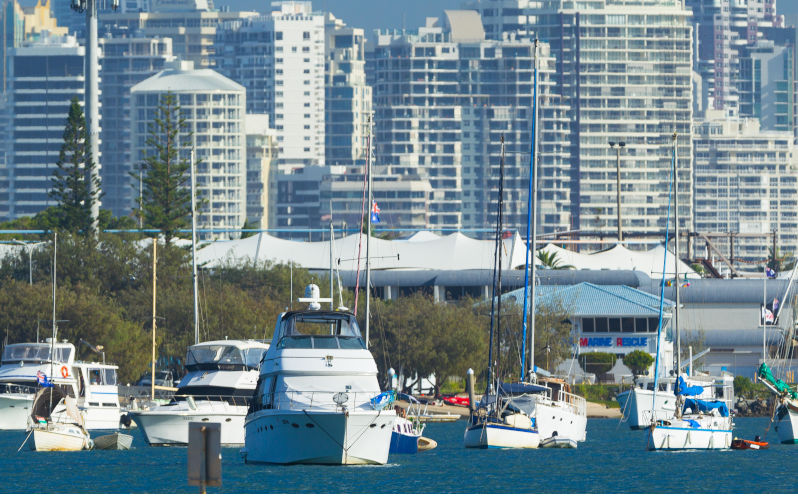Climate change risk to our coastal cities
September 11, 2025
Confronting the nation’s coastal urban cities as it approaches 2055, 30 years on, will be both higher sea levels and air and water temperatures.
And 50 years from now (in 2075) sea levels will be substantially higher (and continue to further rise into the 22nd century). A high level of confidence exists in projections of future sea levels and temperatures along with less certain, but reasonable, projections of intensification of rainfall in most of our coastal cities.
More than 80% of Australia’s population lives, works, and plays within 30km of the coast. They attract much of the nation’s international business and tourists, and will remain centres of continued population growth with residents demanding access to healthy waterways.
It is imperative that the nation fully understands future consequences of climate change on the specific functioning of the waterbodies around which each of these cities has been built.
What is missing is a national appreciation of what our major estuary urban centres will begin to look like under conditions that are “highly likely” to occur in 30- and 50-years’ time. Sea-level trajectories recently made available by BoM indicate acceleration in rate of sea-level rise around Australia. A general increase of 26cm by 2050 and 83cm by 2100 (an estimate for 2075 is 46cm) is predicted.
We must expect losing tailwater for drains as low tide rises closing the “drainage window” of stormwater systems. In addition, more land will be inundated more frequently, affecting road and rail services as well as public infrastructure (for instance, airports at Sydney and Brisbane) and private property.
Rising groundwater tables and rising damp will harm properties. More places will experience poorer water quality with “bad” water collecting in drains and canals. Increased water temperatures and runoff of nutrients will initiate algal blooms along with other adverse ecosystem effects. The recent algal toxin outbreak in South Australia, under conditions of a warming ocean, highlights what can occur in and around our coastal cities.
How these effects will play out spatially will vary according to the hydrodynamic behaviour of individual estuaries and their link to river flooding (e.g. Brisbane). All this will first be felt locally and spread more widely over time within an estuary depending on local topographies. A typical mitigation response would be to construct or raise protective works such as seawalls or drainage gates. However, these will likely become short-term measures as sea levels reach critical levels for them to not fulfil their intended purposes.
Failure to plan in our coastal urban cities will result in short-term decision making, with increased costs and failed outcomes. Worldwide, in locations that have not planned ahead, there is an increasing investment in costly engineering structures such as tidal barrages. If deployed in Sydney, Brisbane, Melbourne, Perth or any of our coastal cities, these barrages could be catastrophic, cutting the estuary into small, dammed zones, with poor water quality and the loss of important values/services. To avoid this outcome, we need to plan for a future that is connected, adaptable, and aligned to the community’s expectations. Currently, this does not exist.
One could expect that the forthcoming National Climate Risk Assessment might be a first step in identifying risk at the scale of our great coastal cities. Delay in release have been reported in _P&I_ (August 19th). It is possible it could appear sometime in September to be followed by a National Adaptation Plan.
We need to know what the NCRA is saying about the likely coastal impacts that will affect these coastal urban areas, especially in relation to sea-level rise and associated flooding events. This will help planners and policy-makers get on with the task of developing adaptation plans reaching forward to periods when sea level (and water temperatures) will demand greater action to mitigate threats to the nation’s well-being.
I am aware of relevant background work being undertaken by groups within federal and state agencies and by coastal engineers within Engineers Australia. We do have the necessary technical skills to help define the pathways to adaptation that rising sea levels and temperatures will demand of our dominantly urban coastal cities. What is needed is a national governance framework, that can tie the different efforts together, so that the long-term imperative of planning for the future is efficiently managed.
Zali Steggall has prepared a Bill for the Australian Parliament that would provide a legal basis for future governments to take the impacts of climate change seriously. I would argue that such impacts include those that will harm economic, social and environmental conditions in and around urban waterways. Whether this Bill will ever reach the floor of the House of Representatives and be subject to debate is unclear.
To not do so is most unfortunate. But her message is clear. Governments now, and in the future, must regularly assess and demonstrate how they are addressing emerging climate risks “and make informed, long-term plans to safeguard our communities against climate risk”.
A future vision of our urban estuaries should be a top priority. The vision needs to establish how we foresee our waterways in a dynamic future where conditions are ever-changing. The vision should be underpinned by our scientific understanding of how ecosystems and industries work together, highlighting where and how we can make progress through adaptation and design. A future vision, based on needs and supported by science, should be developed by stakeholders within each coastal urban city. A national estuary adaptation program should be a specific component of a National Adaptation Plan, whatever form that may take.
The views expressed in this article may or may not reflect those of Pearls and Irritations.

